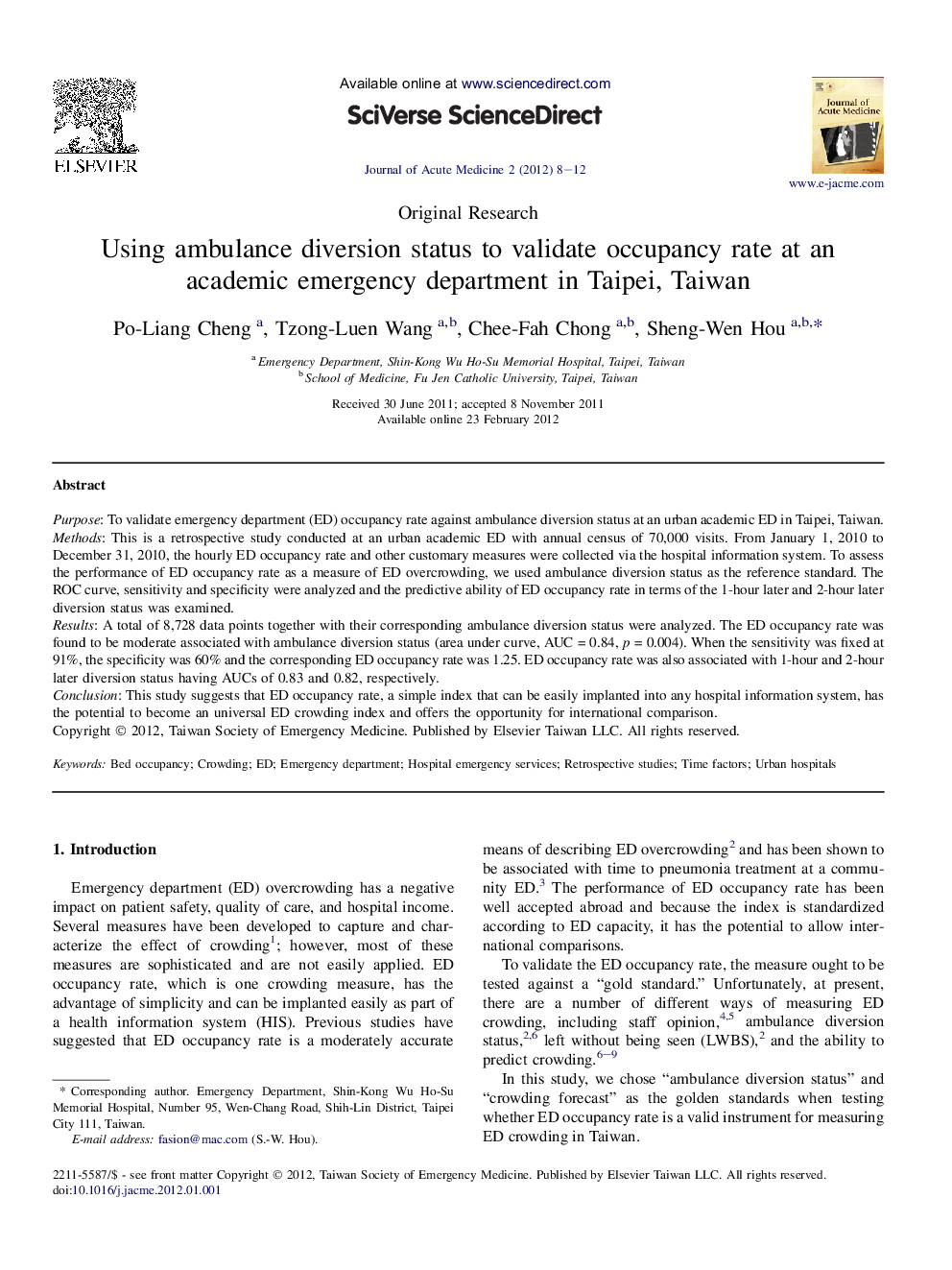| Article ID | Journal | Published Year | Pages | File Type |
|---|---|---|---|---|
| 3245013 | Journal of Acute Medicine | 2012 | 5 Pages |
PurposeTo validate emergency department (ED) occupancy rate against ambulance diversion status at an urban academic ED in Taipei, Taiwan.MethodsThis is a retrospective study conducted at an urban academic ED with annual census of 70,000 visits. From January 1, 2010 to December 31, 2010, the hourly ED occupancy rate and other customary measures were collected via the hospital information system. To assess the performance of ED occupancy rate as a measure of ED overcrowding, we used ambulance diversion status as the reference standard. The ROC curve, sensitivity and specificity were analyzed and the predictive ability of ED occupancy rate in terms of the 1-hour later and 2-hour later diversion status was examined.ResultsA total of 8,728 data points together with their corresponding ambulance diversion status were analyzed. The ED occupancy rate was found to be moderate associated with ambulance diversion status (area under curve, AUC = 0.84, p = 0.004). When the sensitivity was fixed at 91%, the specificity was 60% and the corresponding ED occupancy rate was 1.25. ED occupancy rate was also associated with 1-hour and 2-hour later diversion status having AUCs of 0.83 and 0.82, respectively.ConclusionThis study suggests that ED occupancy rate, a simple index that can be easily implanted into any hospital information system, has the potential to become an universal ED crowding index and offers the opportunity for international comparison.
